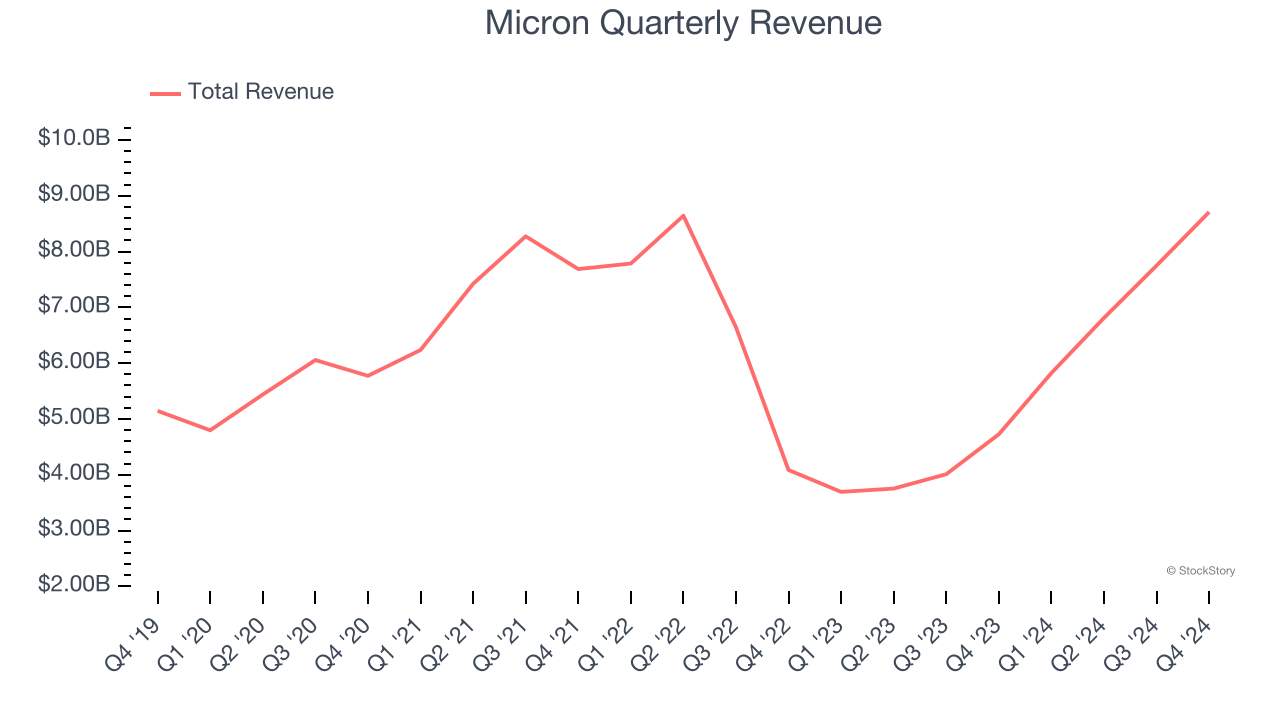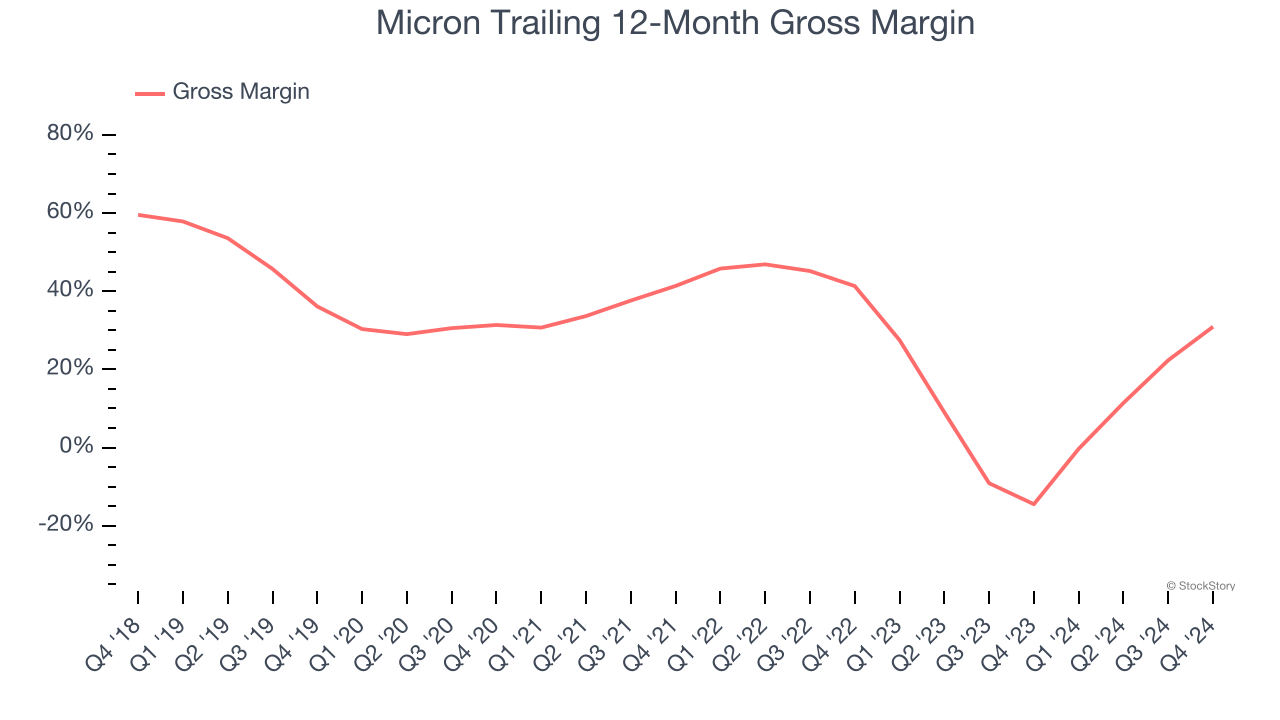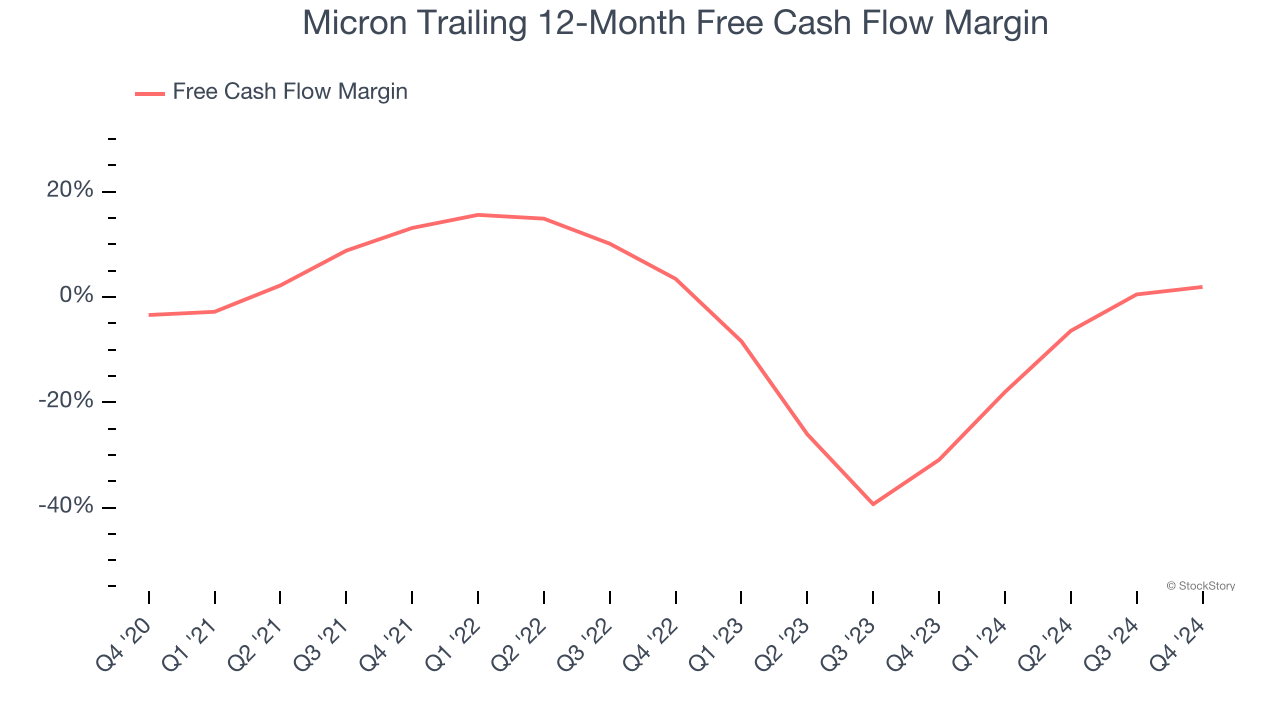
What a brutal six months it’s been for Micron. The stock has dropped 36.1% and now trades at $84.79, rattling many shareholders. This may have investors wondering how to approach the situation.
Is now the time to buy Micron, or should you be careful about including it in your portfolio? Get the full stock story straight from our expert analysts, it’s free.Despite the more favorable entry price, we're swiping left on Micron for now. Here are three reasons why we avoid MU and a stock we'd rather own.
Why Is Micron Not Exciting?
Founded in the basement of a Boise, Idaho dental office in 1978, Micron (NYSE: MU) is a leading provider of memory chips used in thousands of devices across mobile, data centers, industrial, consumer, and automotive markets.
1. Long-Term Revenue Growth Disappoints
Reviewing a company’s long-term sales performance reveals insights into its quality. Any business can have short-term success, but a top-tier one grows for years. Over the last five years, Micron grew its sales at a mediocre 7.1% compounded annual growth rate. This was below our standard for the semiconductor sector. Semiconductors are a cyclical industry, and long-term investors should be prepared for periods of high growth followed by periods of revenue contractions.
2. Low Gross Margin Reveals Weak Structural Profitability
Gross profit margin is a key metric to track because it shows how much money a semiconductor company gets to keep after paying for its raw materials, manufacturing, and other input costs.
Micron’s gross margin is one of the worst in the semiconductor industry, signaling it operates in a competitive market and lacks pricing power. As you can see below, it averaged a 14.7% gross margin over the last two years. Said differently, Micron had to pay a chunky $85.31 to its suppliers for every $100 in revenue. 
3. Cash Burn Ignites Concerns
Free cash flow isn't a prominently featured metric in company financials and earnings releases, but we think it's telling because it accounts for all operating and capital expenses, making it tough to manipulate. Cash is king.
While Micron’s free cash flow broke even this quarter, the broader story hasn’t been so clean. Micron’s demanding reinvestments have drained its resources over the last two years, putting it in a pinch and limiting its ability to return capital to investors. Its free cash flow margin averaged negative 9.8%, meaning it lit $9.83 of cash on fire for every $100 in revenue.

Final Judgment
Micron isn’t a terrible business, but it doesn’t pass our bar. Following the recent decline, the stock trades at 8.2× forward price-to-earnings (or $84.79 per share). While this valuation is optically cheap, the potential downside is big given its shaky fundamentals. We're fairly confident there are better investments elsewhere. We’d suggest looking at Meta, a top digital advertising platform riding the creator economy.
Stocks We Like More Than Micron
The Trump trade may have passed, but rates are still dropping and inflation is still cooling. Opportunities are ripe for those ready to act - and we’re here to help you pick them.
Get started by checking out our Top 6 Stocks for this week. This is a curated list of our High Quality stocks that have generated a market-beating return of 175% over the last five years.
Stocks that made our list in 2019 include now familiar names such as Nvidia (+2,691% between September 2019 and September 2024) as well as under-the-radar businesses like United Rentals (+550% five-year return). Find your next big winner with StockStory today for free.






